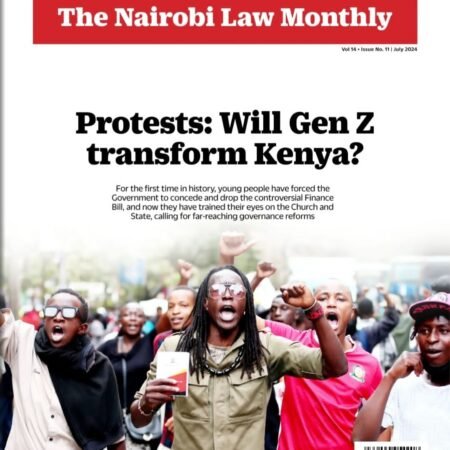Kenya’s public debt stands at Sh7.1 trillion as of September 2020, according to CBK data.
By Antony Mutunga
Before 2020 began, many countries in Sub-Saharan Africa were experiencing rising public debt levels. With the pandemic, things became worse for more than a third of the region’s countries, including Kenya, which has been the recipient of warnings on its rising debt from the likes of Moody’s credit agency and the International Monetary Fund (IMF).
According to Moody’s, Kenya’s rising financing risks are as a result by its large gross borrowing requirements, which include amortization of external bilateral debt and the need to refinance a large stock of short-term domestic debt despite facing a fiscal dilemma due to challenges in government revenue and a weak debt structure exposing it exchange and interest rate shocks.
-
Sale!
Download Nairobi Law Monthly Magazine July 2024 Edition
Downloads Original price was: KShs200.00.KShs100.00Current price is: KShs100.00.
As a result, the agency changed the outlook on the Government of Kenya’s ratings to negative from stable in November. Furthermore, the agency warned that even though the country doesn’t face any acute financing pressures for th moment, the county is not out of the woods.
We are headed to the start of a more difficult external amortization schedule whereby in each of the next three years, Kenya will need to repay on average 1.7 percent of GDP in external principal amortizations, in addition to any potential external financing of the fiscal deficit. And this is despite the uncertainty of the ongoing pandemic.
IMF, on its part, raised Kenya’s risk of debt distress from moderate to high stating the heavy impact the pandemic has on the economy as the reason. The institution, which is concerned that the country’s debt sustainability is above 50 percent of its GDP, is also concerned that the slowdown of economic activity will greatly hamper the country’s ability to service its growing debt. According to IMF data, Kenya’s public debt stood at about 61.7 percent of GDP at the end of 2019 as compared to 50.2 percent at the end of 2015.
With the economy opening up a bit in the third and fourth quarter of the year, many would have expected a change. However, it may be time to prepare for the worst. With the number of cases once again on the rise, the government has continued to lean towards credit to cushion its economy through the pandemic.
For instance, Kenya’s government disclosed it is seeking an IMF credit programme of Sh256.5 billion ($2.3 billion). According to Ukur Yatani, National Treasury Cabinet Secretary, the loan is meant to facilitate continuous support of Kenya’s Covid-19 response and also helpful as we look to areas of reduced debt vulnerabilities through a revenue-driven fiscal consolidation. This comes months after the country received Sh82.4 billion ($739 million) from the IMF through a Rapid Credit Facility (RCF).
With no end in sight in their thirst for external credit, the country has received further forecast that its path towards improving its economic outlook lies in handling its debt dilemma. According to Fitch Ratings, an American credit rating agency, if the general government deficit were brought down to 5-6 percent of GDP on a sustainable basis, this could lead to positive rating action. As things stand, the deficit will widen to 8.3 percent of GDP in the fiscal year to June 2021 (FY21) from 7.4 percent in FY20.
With a growing budget deficit, the government will continue its reliance on external credit. However, Moody’s says that even if the country was to acquire additional credit, it would still face major challenges to stabilize the economy. According to the agency, the pandemic shock is expected to continue decreasing revenue and increasing social vulnerabilities.
Furthermore, the current Building Bridges Initiative and its proposed constitutional changes are expected to increase the government’s expenditure. The growing pressure for increased budgets for the counties is further going to increase the need for more finance as well. Additionally, the coming general elections in 2022 will add to the political difficulties associated with reining in the deficit and minimising the need for more credit.
Although the country can still access and obtain funding as it plans to secure another loan from the World Bank, it is time to deal with Kenya’s growing debt. The first step in reducing the public debt is to reduce the budget deficit, or else, it will be unable to service its loans, leading to economic anarchy. (


